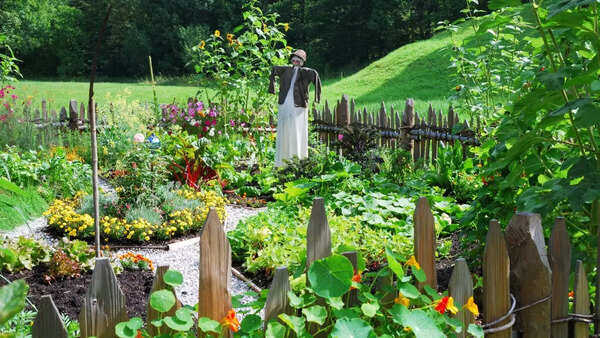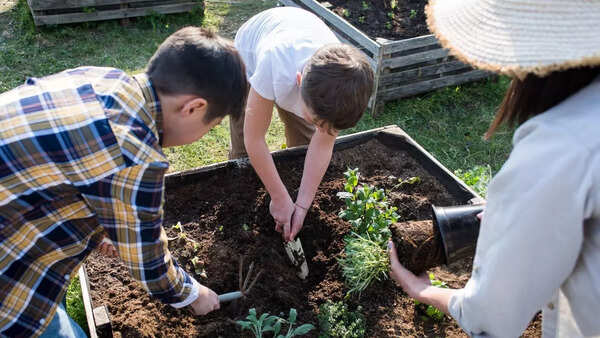The monsoon season revitalizes the earth, providing much-needed water and respite from the summer heat. For gardeners, it's nature's signal to cultivate and grow. Abundant rainfall, softened soil, and moderate temperatures create the ideal conditions for a thriving kitchen garden.
Whether you're an experienced gardener or just starting out, the monsoon season offers a unique chance to grow your own food and experience the joy of gardening. Watch your garden flourish with vibrant greens, vegetables, and flowers as the rains nourish the soil. It’s a chance to reconnect with nature, get your hands dirty, and enjoy the satisfaction of harvesting your own produce.

The monsoon season provides several advantages for starting a kitchen garden:
To maximize success, ensure proper soil drainage to prevent waterlogging.

Follow these steps to create a flourishing kitchen garden this monsoon:
Monsoon rains naturally soften the soil, making it easier to work with. Enhance soil fertility by incorporating organic compost, farmyard manure, or leaf mold. These materials decompose quickly in moist conditions, releasing essential nutrients.
Add natural additives like neem cake or bone meal to further boost nutrition and pest resistance. Test soil drainage by observing how quickly water absorbs into a small hole. For clay-heavy soils, mix in cocopeat or coarse sand to improve aeration and prevent waterlogging.
Consider growing these vegetables and herbs during the monsoon season:
Newer articles
Older articles
 Hetmyer's Heroics: Orcas Stun MI New York with Last-Ball Six in Record-Breaking MLC Chase
Hetmyer's Heroics: Orcas Stun MI New York with Last-Ball Six in Record-Breaking MLC Chase
 Android Users Face Critical Security Risks: Update Your Devices Now, Warns Government Agency
Android Users Face Critical Security Risks: Update Your Devices Now, Warns Government Agency
 Greg Chappell Hails Rishabh Pant's "Revolutionary" Batting, Likens Him to Gilchrist
Greg Chappell Hails Rishabh Pant's "Revolutionary" Batting, Likens Him to Gilchrist
 Dog-Sized Dinosaur Fossil Unearths New Insights into Prehistoric Life Alongside Giants
Dog-Sized Dinosaur Fossil Unearths New Insights into Prehistoric Life Alongside Giants
 West Indies Captain Chase Slams Umpiring After Test Loss, Demands Accountability
West Indies Captain Chase Slams Umpiring After Test Loss, Demands Accountability
 IRCTC's AI Chatbot, AskDisha 2.0, Streamlines Train Ticket Booking, Refunds & Information
IRCTC's AI Chatbot, AskDisha 2.0, Streamlines Train Ticket Booking, Refunds & Information
 Freestyle Chess India Event Scrapped Due to Sponsorship Issues; Carlsen Absence Confirmed
Freestyle Chess India Event Scrapped Due to Sponsorship Issues; Carlsen Absence Confirmed
 Moto G54 Gets Significant Price Drop in India: Check Out the New Affordable Price Tag
Moto G54 Gets Significant Price Drop in India: Check Out the New Affordable Price Tag
 New Zealand Cricket Announces Packed 2025-26 Home Schedule Featuring Australia, England, West Indies & South Africa
New Zealand Cricket Announces Packed 2025-26 Home Schedule Featuring Australia, England, West Indies & South Africa
 Converting JPG to PDF: A Comprehensive Guide for Preserving Image Quality and Ensuring Accessibility
Converting JPG to PDF: A Comprehensive Guide for Preserving Image Quality and Ensuring Accessibility